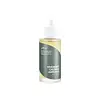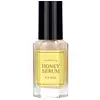What's inside
What's inside
 Key Ingredients
Key Ingredients

 Benefits
Benefits

 Concerns
Concerns

No concerns
 Ingredients Side-by-side
Ingredients Side-by-side

Artemisia Princeps Extract
Skin ConditioningGlycerin
HumectantButylene Glycol
HumectantGlycereth-26
HumectantErythritol
HumectantBetaine
HumectantGlycyrrhiza Glabra Root Extract
BleachingCalendula Officinalis Flower Extract
MaskingPiper Methysticum Leaf/Root/Stem Extract
Skin ConditioningPanthenol
Skin ConditioningPropanediol
SolventBeta-Glucan
Skin ConditioningDipotassium Glycyrrhizate
HumectantHydrogenated Lecithin
EmulsifyingCeramide NP
Skin ConditioningAllantoin
Skin ConditioningCarbomer
Emulsion StabilisingTromethamine
Buffering1,2-Hexanediol
Skin ConditioningArtemisia Princeps Extract, Glycerin, Butylene Glycol, Glycereth-26, Erythritol, Betaine, Glycyrrhiza Glabra Root Extract, Calendula Officinalis Flower Extract, Piper Methysticum Leaf/Root/Stem Extract, Panthenol, Propanediol, Beta-Glucan, Dipotassium Glycyrrhizate, Hydrogenated Lecithin, Ceramide NP, Allantoin, Carbomer, Tromethamine, 1,2-Hexanediol
Glycerin
HumectantWater
Skin ConditioningDimethicone
EmollientButylene Glycol
HumectantCyclopentasiloxane
EmollientNiacinamide
SmoothingPEG/PPG-18/18 Dimethicone
EmulsifyingUndecane
EmollientCyclohexasiloxane
EmollientTridecane
Perfuming1,2-Hexanediol
Skin ConditioningSodium Chloride
MaskingDimethicone/Vinyl Dimethicone Crosspolymer
Skin ConditioningPEG-10 Dimethicone
Skin ConditioningDisteardimonium Hectorite
StabilisingBoswellia Serrata Resin Extract
SmoothingHoney Extract
HumectantAdenosine
Skin ConditioningCinnamomum Cassia Bark Extract
MaskingCurcuma Longa Root Extract
MaskingLevan
Skin ProtectingDecyl Glucoside
CleansingOlea Europaea Leaf Extract
PerfumingEthylhexylglycerin
Skin ConditioningDisodium EDTA
Pollen Extract
EmollientPhenethyl Alcohol
MaskingZiziphus Jujuba Seed Extract
Skin ConditioningCentella Asiatica Extract
CleansingRoyal Jelly Extract
Skin ConditioningPropolis Extract
Skin ConditioningBee Venom
AstringentCitric Acid
BufferingAscorbic Acid
AntioxidantMadecassoside
AntioxidantParfum
MaskingButylphenyl Methylpropional
PerfumingGeraniol
PerfumingLimonene
PerfumingCitral
PerfumingGlycerin, Water, Dimethicone, Butylene Glycol, Cyclopentasiloxane, Niacinamide, PEG/PPG-18/18 Dimethicone, Undecane, Cyclohexasiloxane, Tridecane, 1,2-Hexanediol, Sodium Chloride, Dimethicone/Vinyl Dimethicone Crosspolymer, PEG-10 Dimethicone, Disteardimonium Hectorite, Boswellia Serrata Resin Extract, Honey Extract, Adenosine, Cinnamomum Cassia Bark Extract, Curcuma Longa Root Extract, Levan, Decyl Glucoside, Olea Europaea Leaf Extract, Ethylhexylglycerin, Disodium EDTA, Pollen Extract, Phenethyl Alcohol, Ziziphus Jujuba Seed Extract, Centella Asiatica Extract, Royal Jelly Extract, Propolis Extract, Bee Venom, Citric Acid, Ascorbic Acid, Madecassoside, Parfum, Butylphenyl Methylpropional, Geraniol, Limonene, Citral
 Reviews
Reviews

Ingredients Explained
These ingredients are found in both products.
Ingredients higher up in an ingredient list are typically present in a larger amount.
1,2-Hexanediol is a synthetic liquid and another multi-functional powerhouse.
It is a:
- Humectant, drawing moisture into the skin
- Emollient, helping to soften skin
- Solvent, dispersing and stabilizing formulas
- Preservative booster, enhancing the antimicrobial activity of other preservatives
Butylene Glycol (or BG) is used within cosmetic products for a few different reasons:
Overall, Butylene Glycol is a safe and well-rounded ingredient that works well with other ingredients.
Though this ingredient works well with most skin types, some people with sensitive skin may experience a reaction such as allergic rashes, closed comedones, or itchiness.
Learn more about Butylene GlycolGlycerin is already naturally found in your skin. It helps moisturize and protect your skin.
A study from 2016 found glycerin to be more effective as a humectant than AHAs and hyaluronic acid.
As a humectant, it helps the skin stay hydrated by pulling moisture to your skin. The low molecular weight of glycerin allows it to pull moisture into the deeper layers of your skin.
Hydrated skin improves your skin barrier; Your skin barrier helps protect against irritants and bacteria.
Glycerin has also been found to have antimicrobial and antiviral properties. Due to these properties, glycerin is often used in wound and burn treatments.
In cosmetics, glycerin is usually derived from plants such as soybean or palm. However, it can also be sourced from animals, such as tallow or animal fat.
This ingredient is organic, colorless, odorless, and non-toxic.
Glycerin is the name for this ingredient in American English. British English uses Glycerol/Glycerine.
Learn more about Glycerin